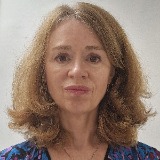
2025 MRS Fall Meeting & Exhibit
Meeting Chairs

Masataka Higashiwaki
Osaka Metropolitan University and National Institute of Information and Communications Technology
Masataka Higashiwaki is a professor in the Department of Physics and Electronics at Osaka Metropolitan University. Additionally, he serves as the Director of Green ICT Device Laboratory at the National Institute of Information and Communications Technology (NICT), and is an honorary professor at the University of Bristol . He received the BS, MS, and PhD degrees in solid-state physics from Osaka University, in 1994, 1996, and 1998, respectively. After a two-year postdoctoral fellowship, he joined the Communications Research Laboratory (CRL) in 2000. From 2007-10 he took a temporary leave from NICT, which was renamed from CRL, and joined the Department of Electrical and Computer Engineering at the University of California, Santa Barbara as a project scientist. He returned to NICT in 2010 and started pioneering work on Ga2O3-based electronics. In 2022, he joined the Department of Physics and Electronics at Osaka Metropolitan University. His current research interest is in Ga2O3 devices and material engineering.
He has published over 140 peer-reviewed papers and 19 book chapters, and has 51 issued patents. He has also given more than 120 invited, plenary, or keynote talks at international conferences. His work has been recognized through several awards, including the 2022 Ichimura Prize in Science for Distinguished Achievement, the 2021 Clarivate Highly Cited Researcher, the 2014 Japan Society for the Promotion of Science (JSPS) Prize, and the 2007 International Symposium on Compound Semiconductors (ISCS) Young Scientist Award. He is a Fellow of the Institute of Electrical and Electronics Engineers.

Manyalibo Matthews
Lawrence Livermore National Laboratory
Manyalibo (“Ibo”) Matthews leads the Materials Science Division (MSD) at Lawrence Livermore National Laboratory (LLNL). Prior to taking on the division leader role in 2021, Matthews served as a group leader in MSD, which is part of LLNL’s Physical and Life Sciences Directorate. He also served as a program group leader in LLNL’s National Ignition Facility and Photon Science Directorate. His research interests include understanding and optimizing metal 3D printing processes, laser materials processing, high-power-laser damage mechanisms, laser-based nanoscale surface modification, vibrational spectroscopy, confocal microscopy, and in situ characterization of transient processes.
Prior to joining LLNL in 2006, he was member of the technical staff at Bell Laboratories, where he worked on advanced methods for optical materials characterization and led a research team in advanced broadband access networks. Matthews earned his PhD degree in physics from the Massachusetts Institute of Technology in experimental condensed matter physics, and his BS degree in applied physics from the University of California, Davis.
Matthews is a Fellow of the Optical Society of America (Optica) and a 2019 alumnus of the Frontiers of Engineering Program, sponsored by the National Academy of Engineering. In 2022 he was recognized as one of Electro Optic’s “Photonics100” innovators. His scientific work has been featured in three book chapters and more than 175 peer-reviewed publications with more than 11,000 citations, including more than a dozen journal covers. His technical contributions have also led to 20 U.S. patents.

Fiona Meldrum
University of Leeds
Fiona Meldrum holds a chair in inorganic chemistry at the University of Leeds, where her research centers on bio-inspired materials chemistry, and in particular on crystallisation. She obtained her BA degree in Natural Sciences from the University of Cambridge in 1989, and her PhD degree in biological crystallisation from the University of Bath in 1992. Following a postdoctoral position at the University of Syracuse, she continued her postdoctoral work at the Max Plank Institute of Polymerforschung after receiving a Humboldt Research Fellowship. Meldrum then joined the Australian National University as a Research Fellow, before returning to the United Kingdom to take up a lectureship at Queen Mary University of London in 1998. She moved to the University of Bristol’s School of Chemistry in 2003 and later joined the University of Leeds in 2009.
Meldrum has been the recipient of a number of awards, including an EPSRC Leadership Fellowship, a Royal Society of Chemistry Interdisciplinary prize, and a European Research Council (ERC) Advanced Grant. Her current research focuses on crystallisation, with particular emphasis on biomineralization and bio-inspired crystal growth, where natural systems are used as an inspiration for the design and synthesis of crystalline and amorphous minerals. She currently has particular interests in the effects of confinement on crystallisation and directing crystallisation pathways.

Barry Rand
Princeton University
Barry Rand is a professor the Department of Electrical and Computer Engineering and Andlinger Center for Energy and the Environment at Princeton University. Rand earned a BE degree in electrical engineering from The Cooper Union in 2001. He then earned his MA and PhD degrees in electrical engineering from Princeton University in 2003 and 2007, respectively. Rand was at imec from 2007-2013, ultimately as a principal scientist, researching the understanding, optimization, and manufacturability of thin-film solar cells. In 2013 he moved into his current role at Princeton University.
Rand’s research interests highlight the border between electrical engineering, materials science, chemistry, and applied physics, covering electronic and optoelectronic thin-films and devices. He has authored over 190 refereed journal publications, has 25 issued U.S. patents, and has received the 3M Nontenured Faculty Award (2014), DuPont Young Professor Award (2015), DARPA Young Faculty Award (2015), ONR Young Investigator Program Award (2016), and Gordon and Betty Moore Foundation Experimental Physics Investigators Initiative award (2023).

Shijing Sun
University of Washington
